-
 If You are Planning a Trip to Pondicherry in 2020, These are the Places to Visit for Foodies, Beach Bums and Shopaholics!
If You are Planning a Trip to Pondicherry in 2020, These are the Places to Visit for Foodies, Beach Bums and Shopaholics!
-
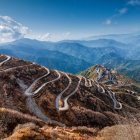 Take a Cool Break This Summer as BP-Guide Brings You the 10 Coolest and Most Mesmerizing Places to Visit in India in the Summers (2019)
Take a Cool Break This Summer as BP-Guide Brings You the 10 Coolest and Most Mesmerizing Places to Visit in India in the Summers (2019)
-
 10 Best Restaurants in Bandra: from Fine Dining to Hipster Cafes and Budget Eats, These are the Places You Absolutely Need to Eat At in 2019!
10 Best Restaurants in Bandra: from Fine Dining to Hipster Cafes and Budget Eats, These are the Places You Absolutely Need to Eat At in 2019!
Best Places You Just Have to Visit in India during August
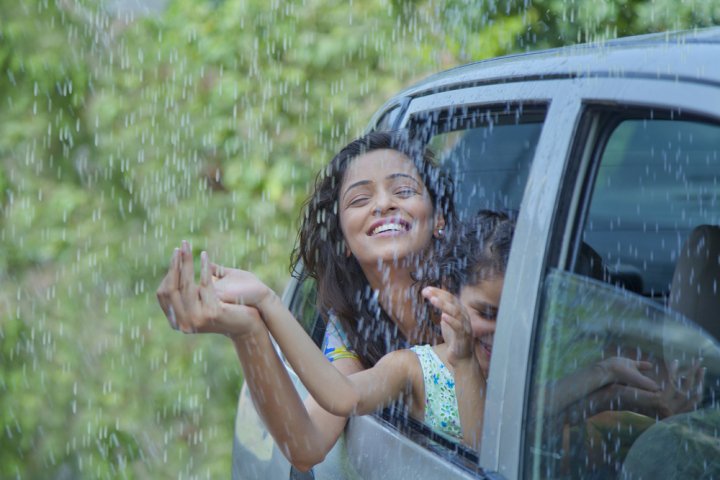
August is likely to be one of the best seasons to visit India. Monsoon just sets in every state, and the heat of the summer dies down. Trees glow green with bright and vibrant flowers is a sight to behold. The climate is not overly warm and just perfect with slight drizzles later in the day to cool you down. And the most significant advantage of all; monsoon is probably the leanest of all tourist seasons. So pack your bags and let's go!
Munnar
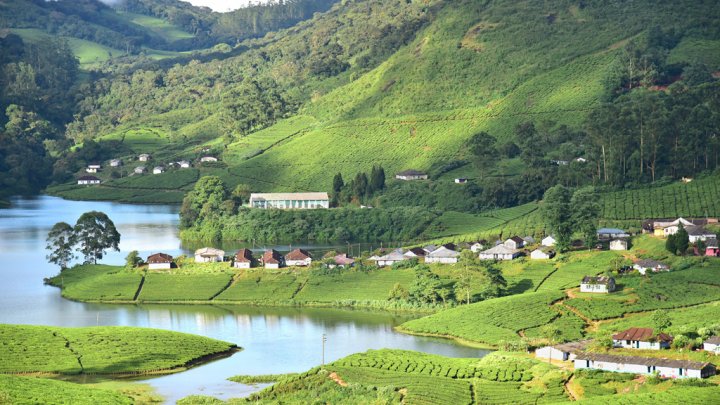
Sprawling hills; Rolling mist; Green valleys; Slight drizzle; Nestled in the Western Ghats, Munnar is one of the most romantic hill stations in South India. It enjoys a fantastic climate throughout the year, but in monsoon when the showers are in, it takes a whole new dimension. If you are looking for some downtime and quiet contemplation, Munnar is the place to be at.
Munnar is an idyllic place, and life moves at your own pace. Wake up to watch the morning sun illuminate the tea estates and take a walk. Plan a hike to the Top Point with a stop by the lakeside at Echo Point. Take a drive to the Mattupetty Dam and bring your camera with you. In case you are lucky, you can come across elephants and deers too. Tea lovers can visit the Tata Tea Museum and soak in some unique tea history.
Getting to Munnar might not be as easy, as the closest International airport, Kochi is 120 km away. From there you could avail taxi services to reach Munnar which might take you around 3 hours. The nearest railway station is Ernakulam railway station in Cochin which is 130 km away.
Auli
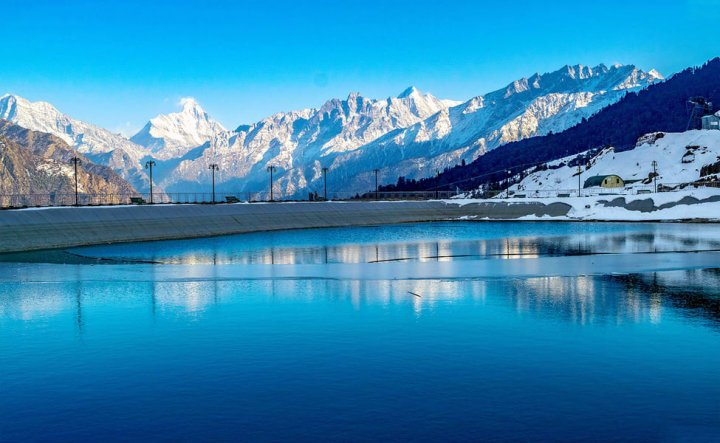
From snow-covered mountains to lush greenery and pine forests, Auli has everything! You have the most captivating of all views; the mighty Himalayas. Also, an amazing view of the magnificent Nanda Devi at an altitude of 7,800 m. While white is all you see during the day, by evening, the sky takes an interesting shade of pink as the sun sets in the Himalayas.
If you are an adrenaline junkie, Auli has some amazing treats for you. The hill station enjoys a fantastic ski season all year round thanks to a human-made lake. Apart from skiing, paragliding, hiking and trekking are few other activities for people seeking adventure. Auli is also the starting point for quite a few treks like the Valley of Flowers, Kuari Pass etc. Don’t forget to visit the Hanuman temple here. The story behind the temple goes like: Hanuman in search of the Sanjeevani herb came to the Himalayas where it grows. On the way back he stops at Auli and takes rest. A temple has been built to commemorate the occasion and the place. From the temple, you have a beautiful view of Mount Neelkanth that you cannot miss.
The nearest airport to Auli is 280 km away. Fly into the Jolly Grant Airport, Dehradun and take a taxi or a bus to Auli. Else, you can also take the train. The nearest railway station is Haridwar railway station.
Agra

Agra is home to one of the seven wonders of the world, Taj Mahal. And that is not the only beauty that Agra has to boast about. It also has 3 UNESCO heritage sites. Tajmahal is just a sneak peek into the rich history and architectural brilliance of Agra. The city situated on the banks of river Yamuna has something for everyone from foodies to history buffs and architecture lovers.
Agra is one of the most famous tourist destinations in India: Taj Mahal, the most romantic monument in the history of India. Emperor Shah Jahan built it for his wife Mumtaz as a token of his love. Once you are done with Taj Mahal, dedicate your time to enjoy the grandeur of the Mughal architecture. You have Agra Fort, Fatehpur Sikri, Jama Masjid, Tomb of Akbar and Itimad-Ud-Daulah's Tomb otherwise called as Baby Taj Mahal. Itimad-Ud-Daulah's Tomb was the inspiration for Shahjahan to build Taj Mahal for his wife.
Apart from the rich architecture of the city, it is also a foodie’s paradise. Agra is home to the famous Mughal cuisine. While you are there, do not forget to visit the bazaars for a spot of shopping and a hot chai or lassi.
Agra is just three hours away from Delhi, and as such, it is well connected. The best way to travel to the city is via train. You have two main railway stations; Agra Fort and Agra Cantt. Agra Fort is quite closer to Taj Mahal while Agra Cantt is the one you need if you are to travel to Delhi.
Jaipur
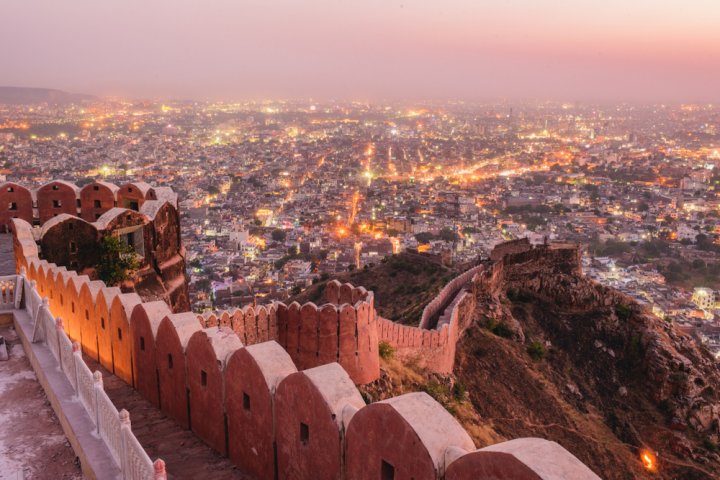
Jaipur isn't called The Pink City for nothing. The city glows in a shade of pink that is so breathtaking to look at. In August, when Jaipur experiences monsoon, the city turns to a darker shade of pink making it one of the best places to visit in August. It's dotted with magnificent forts, grand palaces and lively bazaars. It is one of the earliest planned cities in 1727 by the ruler of the Rajput dynasty, Sawai Jai Singh II.
Jaipur is filled with large, imposing structures, each special in its own way. One of the must-see places is the Jal Mahal, which is situated in the middle of Man Sagar lake. The other architectural wonders you dare not miss are Hawa Mahal, Amber Fort and Palace, Jaigarh Fort, Nahargarh Fort, Birla Mandir, Chokhi Dhani and Ram Niwas Garden.
While you lose your heart to the beauty of Jaipur, don’t miss out on the markets. Soon, you’d see yourself loaded with bright and vibrant clothes, heavy jewellery, unique and artefacts and what not. You can also enjoy the beauty of Jaipur through a hot air balloon ride or paragliding. Few forts also offer camel rides and elephant rides.
Jaipur is well connected with other cities like Delhi via buses operated by Rajasthan State Transport. The only airport is located just 12 km away from the heart of the city.
Kanyakumari
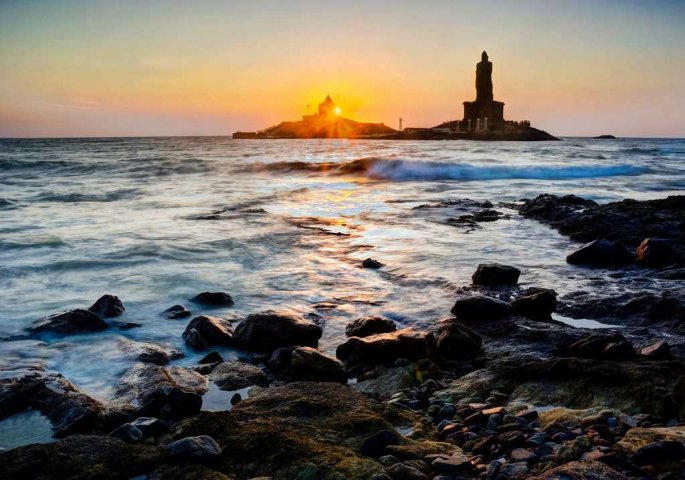
Not your traditional tourist attraction but there is something romantic and beautiful about this small coastal town. Kanyakumari is the southernmost tip of India flanked by the Bay of Bengal on one side and Arabian sea on the other. These two seas are joined by the Indian Ocean which makes the experience more magical.
The tourist destination is also a major pilgrimage centre. It derives its name from the Bhagavathy Amman Temple where the Goddess Devi Kanyakumari resides. She is said to wear a radiant ruby nose ring, so bright and sparkly that the ships mistake it for a lighthouse and crash on the rocks. Hence the south facing door is always locked except for festival days.
Grab a cup of tea, hot coastal food and catch the beautiful sunrise or sunset, whichever your time allows you. We assure you, there cannot be a more magical sunrise/sunset. Walk along the beach and sit in peace pondering to yourself. Right at the beach, a few kilometres in the sea, you have the Vivekananda rock and also the Thiruvalluvar statue. You can find boat services to these rocks on days when the sea is calm. Kanyakumari also boasts of some interesting tourist spots like Mathur Hanging bridge, Thirparappu falls, Vattakottai Fort and the stunning Padmanabhapuram Palace.
Kanyakumari has its railway station which connects you to all the major cities in India. However, the nearest airport is at Trivandrum which is 67 km away from where you can then avail private taxi services or public transport to reach Kanyakumari.
Khajuraho

Imagine starting your day in a temple city with lush trees and a quaint village; Sun shining bright; Occasional drizzle indicating the start of monsoon. That is Khajuraho for you, a peaceful temple city where the architecture of medieval India is at its best. Khajuraho is a small town situated in the Bundelkhand region of Madhya Pradesh. There are many temples scattered around the town making this a UNESCO Heritage site.
The Chandelas built the temples in the 10th century. They built around 85 temples over 20 sq. Km out of which only 25 are intact now. Khajuraho is best known for its erotic carvings and sculptures which make around 10% of the carvings found on the temples. The rest are scenes that you see daily like the villagers going about their work, goddesses, mythical creatures etc. The details, style and intricate architecture are stunningly beautiful and are sure to leave you spellbound.
The temples in Khajuraho are split into two complexes, the Western and the Eastern complex. The western complex mainly holds temples for Hindu Gods and Goddesses. It has 8 for Lord Shiva, 6 for Lord Vishnu, one each for the Sun God and Lord Ganesha and 3 for Jain Tirthankaras. The Eastern complex has temples dedicated to the Jain Tirthankaras. Don't forget to attend the light and sound show at the Western group of temples. Apart from that, there is also the Archeological Museum where fascinating artefacts are kept on display.
To get a taste for the local culture and also for souvenirs, you can visit the flea market. There are quite a few of them around, of which the major one is the Gole Market. For your souvenirs purchase, you could visit the Oswal Complex and City Centre.
Khajuraho is connected through its airport and railway station to all the major cities in India. But Mahoba Junction railway station that is located 75 km away from the town is said to have better connectivity than the railway station situated at Khajuraho.
Ladakh
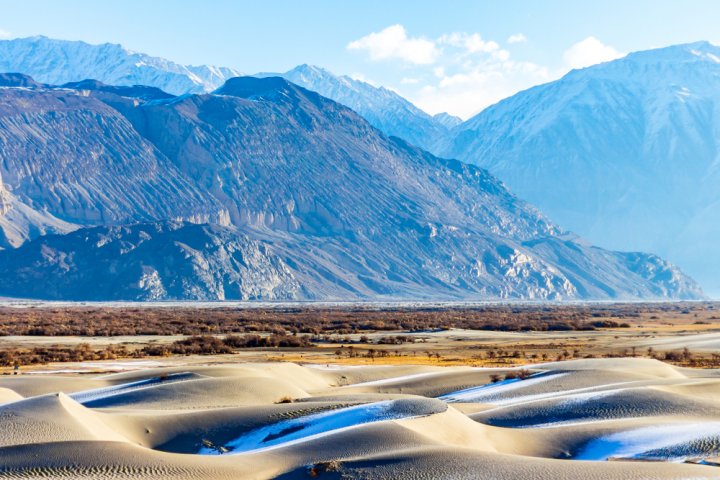
Snow-capped mountains; rugged terrains; Ladakh is a dream come true for trekkers and mountaineers. It is the ultimate dream destination for backpackers and adventure enthusiasts too. The steep terrain and the thrill of travelling through it make it an adventure of a lifetime. Travelling to Ladakh is only possible from June to September. To witness the beauty of Ladakh, you have to go over there!
Ladakh is brimming with natural beauty with lakes and passes which make this region a lot more beautiful. It is tough to list everything, but the must-see tourist attractions around Ladakh are Pangong Tso, Tso Moriri and Nubra Valley. Don't miss out to ride on the beautiful double-humped Bactrian Camels at the dunes along the Shyok and Nubra River. If you are interested in visiting Buddhist monasteries, take a step ahead and stay a night in one.
It is safe to say that Ladakh is well-connected via air travel and also by trains. If you are travelling by air, Leh Kushok Bakula Rimpochee Airport is the main airport in the region. If you are travelling by train, the closest railway station is Jammu Tawi. You also have bus connectivity to Ladakh from Jammu and Delhi. If you are an adventure seeker, try travelling by a Jeep or even better, a motorcycle.
Valley of Flowers
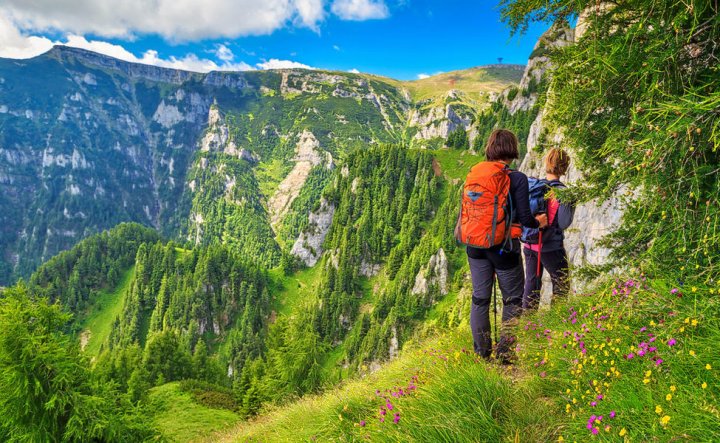
Nestled among the Himalayan peaks is the most beautiful places in the face of Earth. The Valley of Flowers is situated at the converging point of Zanskar and Western and Eastern Himalayan ranges. It is known for the meadows of flowers that stretch along for as long as eyes can see. It is rich in hundreds of rare flora and medicinal herbs. The best time to visit would be August when the arrival of the monsoon season brings new blooms especially the Alpine flowers like the Golden Lily and the floor would be a riot of colour.
Along with the untamed blooms are rare species of animals that are native to the region. You can find endangered animals like snow leopard, brown bear, musk deer and more. The region is also a UNESCO World Heritage site. While you are there, visit Hemkund Sahib, the highest Gurudwara in the world. Nestled in the lap of beauty, the sacred site offers tranquillity and the chance to offer your prayers in peace.
The nearest airport to the Valley of Flowers is the Dehradun airport which is 295 km away. The nearest railway station is in Rishikesh which is 276 km away. From Dehradun to Joshimath, it is a 10-hour drive and another hour to Govind Ghat. From Govind Ghat, it is a long trek of about 10 hours to Ghangaria where the base camp is situated. Alternatively, you can also hire a mule. From the base camp, there is a 10 km hike to see the Valley of Flowers.
Cherrapunjee
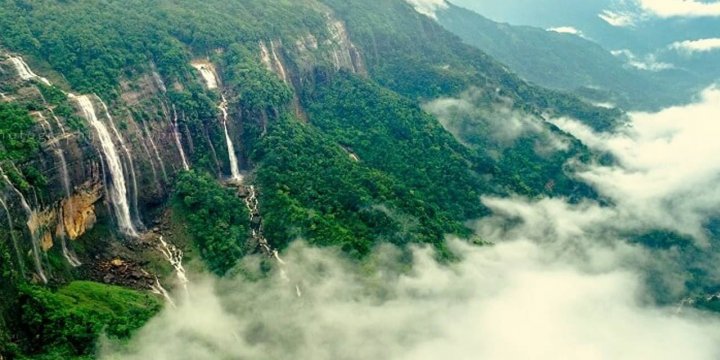
Cherrapunjee enjoys the reputation of being the second wettest place on the face of Earth. And that alone makes it an unexplored attraction with lush green beauty and numerous waterfalls. If you are the one who enjoys monsoon, Cherrapunjee is the place to enjoy the best of rains and unbridled beauty.
Set quite a distance away from the bustle of the city, Cherrapunjee is a haven for people looking to spend a weekend in peace and also for nature lovers and photographers. The Seven Sisters Falls, Nohkalikai Falls, Kynrem Falls and the Mawsmai Falls make for a beautiful picture perfect scenery that makes you feel out of the world. Owing to the incessant rains and the various rivers in the tourist attraction, Cherrapunjee also has numerous caves that make for major tourist hubs. Krem Mawmluh Cave, Krem Phyllut, Khasi Monoliths and the Mawsmai Cave offers a thrilling experience for cave explorers and tourists alike.
For a unique experience, one should not miss the 100 ft long Double Decker Living Root Bridge. It is made from the Indian Rubber Tree across the Umshiang river. These bridges are the living roots of the tree trained to grow in the required direction.
Cherrapunjee is situated approximately 58 km from Shillong. The road to the attraction is steep and bathed in mist, making for an unforgettable journey. Buses and taxis ply to and from Cherrapunjee.
Athirapally Falls
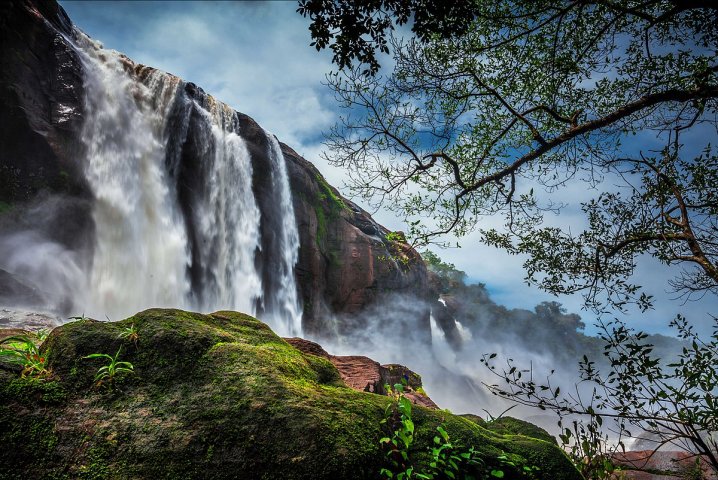
God’s Own Country, Kerala prides itself in having some of the most beautiful and raw nature in India. And the most impressive of it all is the Athirapally Falls in Thrissur district. Athirapally Falls otherwise called the Niagara of India is created by the Chalakudy river that falls 80 ft from the subtropical rainforest where the river Chalakudy runs.
The fall itself is located in the borderline of the Sholayar forest which is home to endangered species of animals and birds. The river creates a unique ecosystem that isn't found anywhere else in the country. The untouched beauty also houses the Charpa Falls & Vazhachal Falls.
Adventurists can also trek along the forest and feast on the unbridled and bountiful beauty. On the way, you can also visit Angamaly which is a Buddhist town, Malayattoor. It has a Church where the relics of St Thomas is housed. Kalady lies along the way where Sri Adi Shankara was born. History and architecture buffs can visit the Aluva Palace which is an architectural marvel. It is a blend of the English and Travancore styles and served as a summer palace of the royal family.
Athirapally falls are connected by road to the nearest railway station and the airport. The nearest railway station is Thrissur which is at a distance of 61 km, and the nearest airport is around 71 km from here.
Top Travel Tips During Monsoon
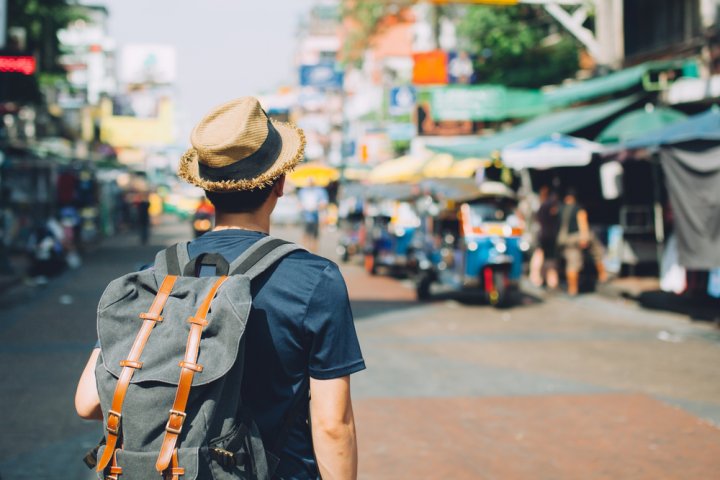
Monsoon in August is a pleasant time in India with intermittent rains and mist. Fresh atmosphere, the smell of rain and the pleasant climate leave you calm and refreshed. But monsoon comes with its own set of problems. With a little care, you can circumvent most problems and have the vacation that you dreamt of.
- No Street Foods Including Cut Fruits: Avoid street foods of all kinds including cut fruits during monsoon. Monsoon is the time when water-borne diseases are prevalent.
- Bug Repellents and Necessary Medicines Are a Must: It is always safe to carry prescribed medications along with other important medicines for simple fever and pains during travels. But when you travel during monsoon, it is also important that you carry bug repellants especially when you are camping or trekking.
- Buy Bottled Water: Drinking water from unreliable sources is not recommended during travels. But during monsoon, it is imperative that you rely on bottled water for your needs. Water-borne diseases are more widespread during monsoon season.
- Only Synthetic Clothes: Tourists are advised to use cotton and clothes made of plant fibre during their travel in India. But in monsoon, it is preferable that you use outfits from synthetic fabrics like polyester for the only reason that they dry easily in the gloomy and humid weather.
- Waterproof Footwear: A reliable pair of footwear or two is absolutely a necessity when you are travelling. But when you are going in August, which is a monsoon season in most of India, waterproof footwear is a must. Damp footwear would be the source of discomfort, and the smell of soaked footwear is not something you’d want to face when you are travelling. A good pair of waterproof footwear makes your vacation hassle free especially if you are planning on hiking on trekking in mountainous regions.
-
 पहाड़ो, जंगलों, झरनों और गंगा नदी की शांति में तरोताजा होने के लिए तैयार हो जाइये(2021) :ऋषिकेश में कैंपिंग के लिए 10 सबसे अच्छे स्थानों को सूचीगत किया है।
पहाड़ो, जंगलों, झरनों और गंगा नदी की शांति में तरोताजा होने के लिए तैयार हो जाइये(2021) :ऋषिकेश में कैंपिंग के लिए 10 सबसे अच्छे स्थानों को सूचीगत किया है।
-
 Looking for a Good Budget Laptop? We Have Hand-Picked the 8 Best Laptops in India under 25,000 That Offer Great Battery and Superior Processors (2020)
Looking for a Good Budget Laptop? We Have Hand-Picked the 8 Best Laptops in India under 25,000 That Offer Great Battery and Superior Processors (2020)
-
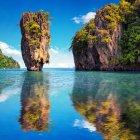 Feeling Jaded and Worn of Late? Perhaps it's Time to Rediscover the Most Beautiful Places in India: 10 Destinations That Will Refresh and Rejuvenate You
Feeling Jaded and Worn of Late? Perhaps it's Time to Rediscover the Most Beautiful Places in India: 10 Destinations That Will Refresh and Rejuvenate You
-
 Looking for the Best Bags for Backpackers? Our Top Picks are the Best Contenders on the Market at the Moment (2020)
Looking for the Best Bags for Backpackers? Our Top Picks are the Best Contenders on the Market at the Moment (2020)
-
 Planning for an Outdoor Camping Expedition with Your Family and Friends? Here We Have Come Up with 10 Best Top-Notch Camping Tent, Which is Going to Help You Rest Comfortably Amid the Woods (2020)
Planning for an Outdoor Camping Expedition with Your Family and Friends? Here We Have Come Up with 10 Best Top-Notch Camping Tent, Which is Going to Help You Rest Comfortably Amid the Woods (2020)
Experience the Rich Indian Culture
During your trip to India, try to visit local markets and towns instead of shopping or eating out at worldwide franchises or big malls as these places are where you get to experience authentic India. You can get these things around your region as well; what you cannot experience in your area is the rich Indian culture and tradition. From clothing to food, dive right into what this one-and-only country has to offer so that you take away some beautiful memories to cherish forever!

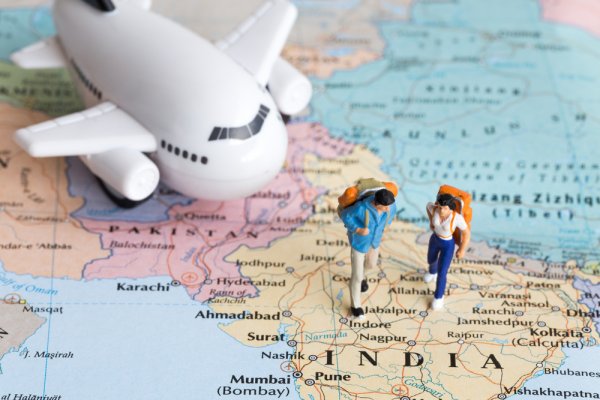
 Highlight the Best Facets of Your Incomparable Beauty: Discover the Best Face Highlighter Currently Available in India and Everything You Need to Know About Using Face Highlighters for Maximum Effect (2023)
Highlight the Best Facets of Your Incomparable Beauty: Discover the Best Face Highlighter Currently Available in India and Everything You Need to Know About Using Face Highlighters for Maximum Effect (2023)
 Forget the Blemishes and Get that Picture Perfect Flawless Radiance on Your Face: Check out the Best Foundations for Oily Skin Currently Available in India and Everything You Need to Know About Makeup Foundations (2023)
Forget the Blemishes and Get that Picture Perfect Flawless Radiance on Your Face: Check out the Best Foundations for Oily Skin Currently Available in India and Everything You Need to Know About Makeup Foundations (2023)
 Make Your Presence Felt Wherever You Go: Discover the Best Perfumes Under 2000 for Both Men and Women to Announce Your Arrival and Make Any Occasion Memorable (2023)
Make Your Presence Felt Wherever You Go: Discover the Best Perfumes Under 2000 for Both Men and Women to Announce Your Arrival and Make Any Occasion Memorable (2023)
 Protect Your Oily Skin from the Harmful Rays of the Sun: Discover the Best Gel Based Sunscreens for Oily Skin and Everything You Need to Know Before Buying One (2023)
Protect Your Oily Skin from the Harmful Rays of the Sun: Discover the Best Gel Based Sunscreens for Oily Skin and Everything You Need to Know Before Buying One (2023)
 Minor Blemishes and Wrinkles Affecting Your Confidence? Check out the Best BB Creams to Conceal Your Worries and Nourish Your Skin to Restore the Healthy, Radiant and Glowing Complexion Back Again (2023)
Minor Blemishes and Wrinkles Affecting Your Confidence? Check out the Best BB Creams to Conceal Your Worries and Nourish Your Skin to Restore the Healthy, Radiant and Glowing Complexion Back Again (2023)
